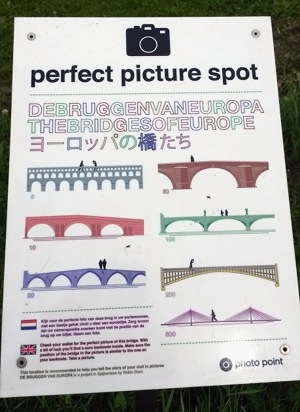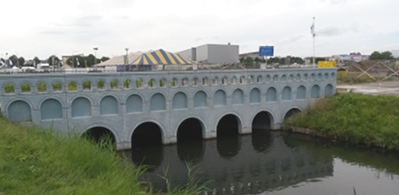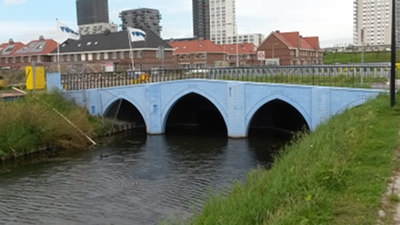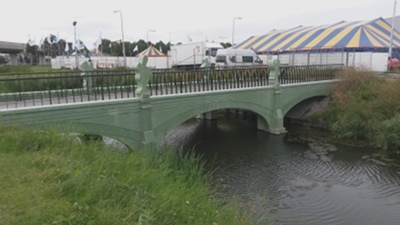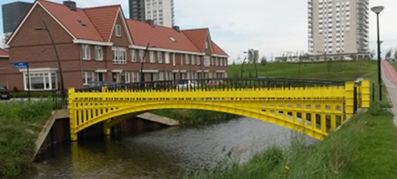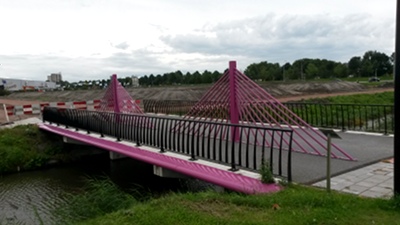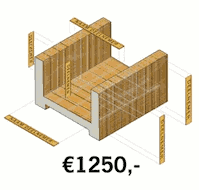In 2011 we reported about pedestrian bridges resembling euro bank notes in Spijkenisse near Rotterdam and that they would be built at the same time as the neighbourhood they connect to downtown Spijkenisse.
The fictional bridges were designed by Austrian engraver Robert Kalina while the real bridges were designed by Dutch designer Robin Stam. The neighbourhood is still being built, but the six bridges are all there. Read on to find out why there are only six bridges although there are seven bank notes.
I happened to be working at the Spijkenisse Festival this year, which was held next to the new area. As I toured the grounds with my morning coffee, I noticed a bright yellow bridge. I looked around and saw some more coloured bridges, then realised I was staring at the ‘euro bridges’.
Below are photos of all the bridges which I took with a smartphone between two rain showers. Apparently the Japanese have a thing for these bridges, hence the prominence of Japanese on the sign (above).
On the far left of the neighbourhood there’s the 500, the 50 and the 10 bridge, and half a kilometre away on the far right of the area there’s the 100, the 5 and 20, and the 200.
The bridge depicting the 5 euro note has the bridge of the 20 euro note on the other side, the only bridge with a dual function. The 5 comes close to its grey bank note, and the blue is brighter than its legal tender counterpart.
The 10 euro bridge is more burnt sienna coloured than red, but it looks nice that way.
The green of the 100 is subdued. Since most shops don’t accept anything more than 50s, I don’t see 100s very often as they are inconvenient.
You can’t miss this yellow bridge depicting the 200, which stands out from the rest.
The 500 bank note bridge reminds me of the Martinus Nijhoff cable bridge near Zaltbommel, Gelderland, but magenta.

